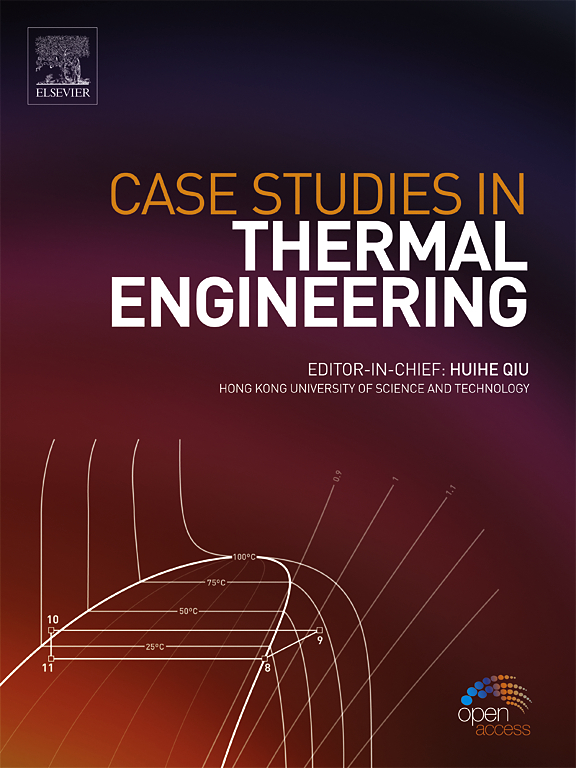Determination of heat transfer characteristics of tube bundles over heating plate by machine learning
IF 6.4
2区 工程技术
Q1 THERMODYNAMICS
引用次数: 0
Abstract
In this study machine learning is used with the aid of a deep neural network algorithm to predict convective heat transfer characteristics for inline and staggered tube bundles, and correlation equations for Nusselt number and friction factor are derived. Machine learning algorithm's data were obtained from experimental work for various transverse pitch of the tube bundles, longitudinal pitch of the tube bundles and Reynolds number. 276 experimental data points were taken for both inline and staggered tube bundles. However, considering that the data obtained from the experimental study may be insufficient for training, a two-step data augmentation method and retraining with cross-validation was used to prevent data deficiency in the deep neural network structure. Thus, the unseen data in the experimental work were also predicted. The coefficient of determination for the DNN model predictions was obtained greater than 0.96. One correlation equation for Nusselt Number and three correlation equations for friction factor were proposed from the augmented data with machine learning. The R2 values of the correlation equations varied between 89 % and 99 %. As a result, machine learning methods successfully applied to predict the Nusselt number and friction factor of tube bundles consistent with the experimental data.
通过机器学习确定加热板上管束的传热特性
本研究利用深度神经网络算法进行机器学习,预测直列和交错管束的对流传热特性,并推导出努塞尔特数和摩擦因数的相关方程。机器学习算法的数据来自不同管束横向间距、管束纵向间距和雷诺数的实验工作。直列管束和交错管束的实验数据点均为 276 个。但是,考虑到实验研究获得的数据可能不足以进行训练,因此采用了两步数据增强法和交叉验证再训练法,以防止深度神经网络结构中的数据不足。因此,实验工作中未见的数据也被预测出来了。DNN 模型预测的判定系数大于 0.96。根据机器学习的增强数据,提出了一个努塞尔特数相关方程和三个摩擦因数相关方程。相关方程的 R2 值介于 89 % 和 99 % 之间。因此,机器学习方法成功地应用于预测管束的努塞尔特数和摩擦因数,并与实验数据保持一致。
本文章由计算机程序翻译,如有差异,请以英文原文为准。
求助全文
约1分钟内获得全文
求助全文
来源期刊

Case Studies in Thermal Engineering
Chemical Engineering-Fluid Flow and Transfer Processes
CiteScore
8.60
自引率
11.80%
发文量
812
审稿时长
76 days
期刊介绍:
Case Studies in Thermal Engineering provides a forum for the rapid publication of short, structured Case Studies in Thermal Engineering and related Short Communications. It provides an essential compendium of case studies for researchers and practitioners in the field of thermal engineering and others who are interested in aspects of thermal engineering cases that could affect other engineering processes. The journal not only publishes new and novel case studies, but also provides a forum for the publication of high quality descriptions of classic thermal engineering problems. The scope of the journal includes case studies of thermal engineering problems in components, devices and systems using existing experimental and numerical techniques in the areas of mechanical, aerospace, chemical, medical, thermal management for electronics, heat exchangers, regeneration, solar thermal energy, thermal storage, building energy conservation, and power generation. Case studies of thermal problems in other areas will also be considered.
 求助内容:
求助内容: 应助结果提醒方式:
应助结果提醒方式:


